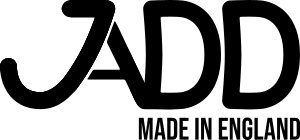The Factory
How It's Made
OUR FOOTWEAR

Our shoes are made using the Stitchdown construction, unique in the fact that instead of the upper leather turning underneath the insole like more common constructions, the Stitchdown turns outwards and is stitched directly to the leather insole and rubber mid-sole. These two layers combined are called the 'runner'. The advantages of this are a durable construction which is repairable, and more flexible, increasing the comfort of the shoes. The stitchdown is one of the most labour intensive shoe constructions to manufacture.
Made in England, from Start to Finish.
Our prices reflect the high level of craftsmanship that goes into our products, and the premium materials we use throughout to ensure comfort and durability. The materials we use can be considered among the best of their kind in the world, a level of quality that can be seen and felt to be superior by anyone. No part of our production process is outsourced, so there are no grey areas when we stamp 'Made in England' in our shoes, which is why Jadd will additionally stress 'from start to finish' every time.
DESERT BOOTS
We know desert boots. We've made them for over 15 years, including for other brands and for one of the biggest footwear brands in the world. So when it was time to reinvent our own offering, we knew exactly what we wanted to achieve.
Desert boots should be simple, stylish, and comfortable. For our new design, we brought in the radius of the ankle measurement and moved the eyelet position closer to the leg for a more secure fit. The gap between the eyelet facings was increased for more adjustability in lacing, and the height of the backs was brought down for a more level and balanced feel, which also lessens any binding of the upper on the back of the leg.
Our Desert boot has true ability to be dressed up or dressed down with its clean lines and classic silhouette.

The Process
Clicking
We begin with the cutting process, known in the industry as 'clicking', due to the sound the blade makes as it leaves the cutting board. In large factories, the clicking room would have had many workers all cutting by hand with a traditional clicking knife, all emitting little 'clicks' as each piece was cut.
We continue this tradition of hand cutting, having templates made from either card or plastic which are skilfully cut around with a special knife for a clean and precise edge. The blades are individually shaped from old hacksaw blades, which gives us a good balance of flexibility and edge retention when sharpening.
For bulk production, we also use a 'clicking press', which is a powerful hydraulic machine which stamps out the leather pieces like a giant cookie cutter.
Closing
All the leather pieces from clicking are now prepared for the sewing operations, where by the flat two-dimensional pieces will be 'closed' into a three-dimensional shape which is called the 'upper'. The leather edges will be thinned by shaving slivers of leather off so that the seams lie flat, and any beading and edge inking processes will also be done before the pieces are stitched together.
We use several types of leather machines and sewing machines for this process, each one requiring a high level of understanding and skill to operate successfully. This is a hand made process with no automation.
Lasting
This is where the shoe really starts to take shape. The closed uppers have their stiffeners inserted in the toe and heel area, and are then placed over a plastic shoe mould called a 'last'. Using the assistance of powerful machinery, the leather upper is grabbed by pincers which the operator controls individually with corresponding levers, to pull the upper tightly over the last whilst keeping it central.
A good eye and feel is needed to keep the upper central and tight to the last, but not to over stretch the upper which would result in a loss of proportion, and even burst seams.
Again, there is no automation in this process.
Stitching
After the upper is lasted, the upper is stitched directly to a mid-sole using a special outsole stitcher. This is where the 'stitchdown' process takes its name.
The stitch is made using heavy thread, by a 'lock stitch' process, which is the strongest. If one stitch should become damaged or break, the rest will remain in place and strong, especially because the stitches are also cemented in underneath as well.
Our standard thread colours are black, brown, and natural, but we have other colours in stock available on request, such as red, yellow, orange, and various shades of green.
Sole Laying
The soles are prepared for cementing onto the lasted and stitched uppers.
After the soles are attached to the lasted uppers with heat and pressure, highly skilled trimming and finishing operations follow.
We use natural plantation rubber crepe soles, as pictured, for the traditional Desert boot specification, with Vibram and other sole options available.
Shoe Room
The last step in the production process, here the shoes have their lasts removed, and are inspected, cleaned, branded and padded heel socks inserted, laced, and boxed.
The shoes may be given a cream polish or wax treatment to enhance or preserve the finish of the leather.
The lasts can now be used to start another batch of shoes. We manufacture shoes in multiples of 12, in order to keep our shoe racks full for maximum efficiency as they are moved around the factory between processes.





